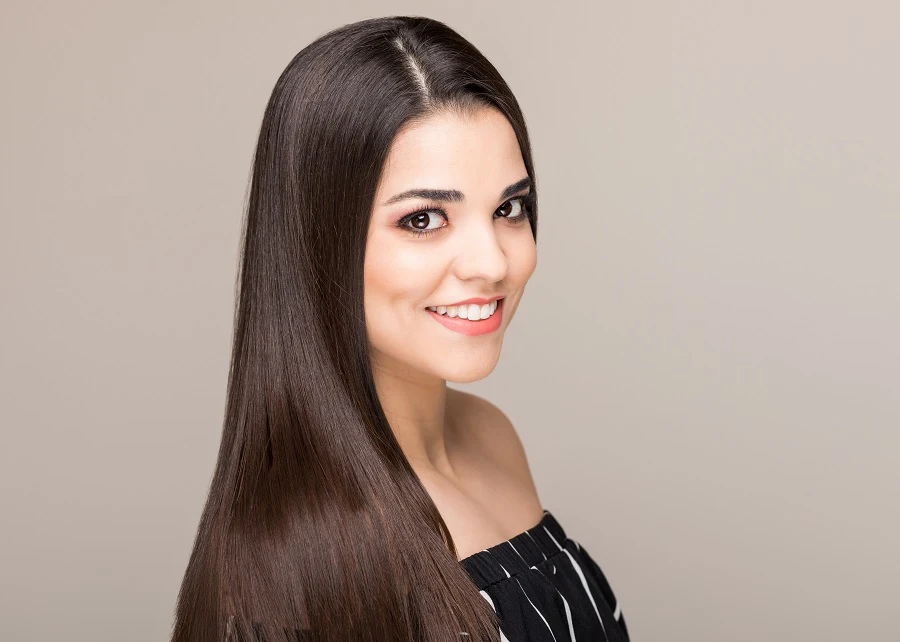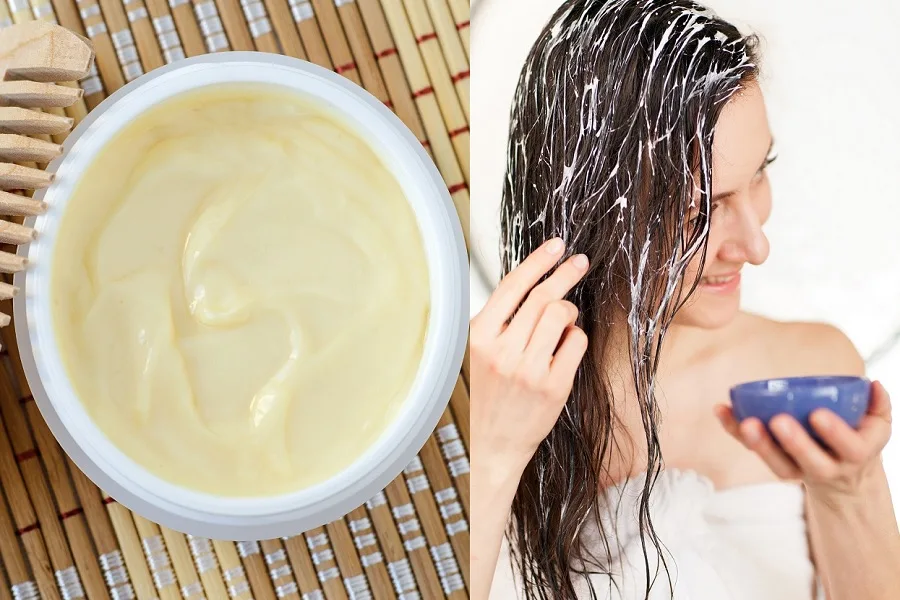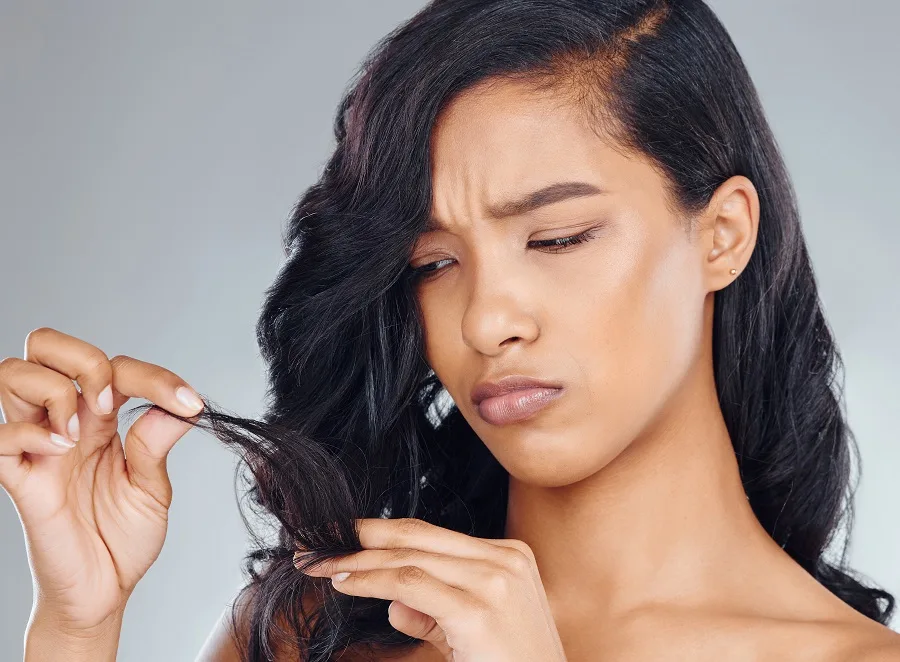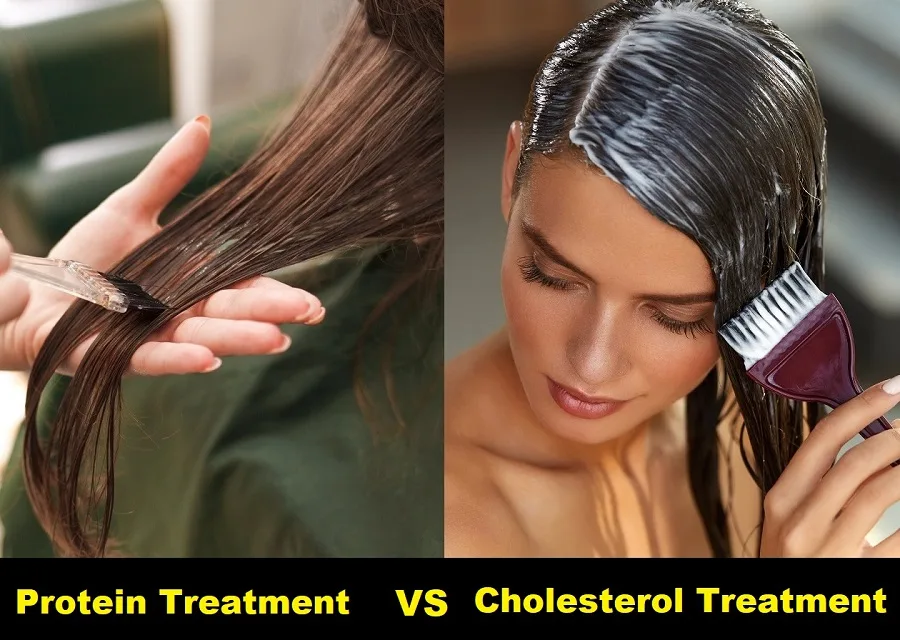Professional hairstylists and beauty-conscious individuals have been using cholesterol for hair for decades now. It is one of the inexpensive ways to treat your hair.
Although it is found commonly in the ethnic hair-care section, cholesterol can be used by any individual and on different types of hair without any fear of accumulation of greasy residue.
Thick and cold, it smears on your hair with the steadiness of petroleum jelly, but it becomes malleable once exposed to the heat. It is therefore easy to clean with warm water.
What is cholesterol for hair?

Cholesterol is a type of lipid that’s essential for your body, including your hair. Your liver produces enough cholesterol to meet your needs, but you also get some from the foods you eat. Cholesterol doesn’t dissolve in water, so it travels through your blood to reach different parts of your body.
Cholesterol is important for keeping your hair moisturized, healthy, and strong. Using hair products with cholesterol can give your hair a hydration boost and protect it from damage. Your body has a system to get rid of excess cholesterol, but sometimes it doesn’t work perfectly, leading to extra cholesterol in your blood, which could cause problems.
It’s good to know that cholesterol isn’t bad by itself, and we actually need it to live. But too much can be harmful, so it’s important to learn about its functions and types. Understanding your cholesterol numbers and how to manage them if needed can help you stay healthy and keep your hair looking great!
Benefits of Cholesterol for Hair

Cholesterol can do wonders for your hair, no matter your hair type. Let me break down the benefits for you:
Repairs hair: Cholesterol treatments are rich in lipids that target damaged hair. If your hair has been exposed to heat, color, or chemical treatments, the cholesterol hair treatment can restore hair’s health, moisture, and softness.
Rehydrates hair: Cholesterol treatments add extra lipids and fats to your hair. So, your hair becomes hydrated which is perfect for those with dry or overwashed hair.
Smooths hair cuticles: Cholesterol, along with ceramides and 18-MEA, helps your hair cuticle lay flat. They act like a barrier and keep your hairs together naturally which reduces frizz.
Softens hair: The nourishing oils and cholesterol in these treatments help soften hair. It also improves the texture of damaged or overworked hair.
Defines curls: Cholesterol treatments can boost your curly or wavy hair’s natural oils in curly or wavy hair. This will make your hair get a more defined look.
Adds shine to your hair: Damaged hair can look dull, but cholesterol treatments help restore a natural shine. Your hair will look healthier and shinier.
Great for over-processed hair: Cholesterol treatments counteract the hair damage caused by heat, color, or chemicals. Over-processing strip your hair’s natural protection and weaken the hair cuticle. Cholesterol treatment can repair and add a protective layer to your hair.
Budget-friendly: Cholesterol treatments are usually cost-effective, with many options on the market for even 3-4$!
How to Use Cholesterol Treatment for Hair

Cholesterol for hair is a type of treatment that incorporates the use of ingredients rich in fats or lipids. When cholesterol is used in hair treatment, it repairs damaged hair and restores its moisture, giving it a definition.
Cholesterol hair treatment has been utilized by American and African aborigines for many years to restore hair smoothness and moisturize it after continuous styling processes and chemical treatments.
There are a variety of cholesterol hair treatments today. Some can be bought in the markets or online, while others you can do on your own at home.
Below are three ways to use cholesterol treatments for your hair.
Cholesterol Hot Hair Treatment
In this treatment, cholesterol oil is applied to the hair immediately after shampooing. Then a cap is placed over the head for almost one minute and then washed off, followed by a regular conditioner. It is generally meant to restore the natural moisture of the hair.
The other benefit is that it rejuvenates the sheen, hence making it look healthier and better than before. Besides, it reinstates the moisture lost because of damage. If you frequently dry-blow or apply chemicals to your hair, this is a guaranteed way to restore the lost glow.
How to Make Homemade Cholesterol for Hair
This is one of the traditional forms of cholesterol hair treatment methods. It is done with mayonnaise. Regardless of what you use, either homemade oils and eggs or mayonnaise, the results are excellent.
The treatment makes curly hair voluminous and soft. If you don’t like the smell of eggs, it is recommended you use store-bought mayonnaise. It gives the same results with a pleasant fragrance.
DIY mayonnaise hair treatment At Home

Want to give your hair a homemade treatment? You can try a mayonnaise treatment to add some cholesterol and nourishment. Mayonnaise has egg yolks, which are rich in cholesterol, as well as vinegar and other acids that help lower the pH. Here’s how you can do it:
- Start by working the mayonnaise into your hair, from your scalp all the way to the ends.
- Put on a shower cap and let it sit for 20-30 minutes.
- Rinse your hair thoroughly, then shampoo and condition as usual.
If you don’t have mayonnaise, you can use beaten eggs instead. Just apply the mix to your hair in the same way, and it should help the cholesterol get into your hair.
Keep in mind that everyone’s hair reacts differently to treatments. You might not love the smell of mayonnaise or eggs, and that’s okay.
Also, be careful not to over-moisturize your hair, as it can cause hygral fatigue, making your hair strands weaken and break. Make sure your hair has enough protein to balance things out.
Cholesterol Deep Conditioning Treatment
This is the most commonly used cholesterol hair treatment by professionals. The elements are applied to the hair, covered with a plastic cap, and allowed to remain there for 15 minutes. Afterward, the head is wrapped with a warm towel or placed under a hooded dryer.
If your hair is seriously damaged, the conditioner can be left on the hair for about an hour. Though most deep treatments contain olive oil in their components, you can add a little more olive oil if you need even better results. The results of deep conditioning are smoother, silkier, and shinier hair.
Hair Types Suitable for Cholesterol Hair Treatment

Consider a cholesterol hair treatment if your hair is:
- Dry & Brittle
- Broken
- Frizzy
Cholesterol hair treatments can be super helpful for different hair types, especially if you’re looking for soft, moisturized hair. People with damaged hair from chemicals or heat can really benefit from these treatments. You’ll often find cholesterol treatments in the textured hair section at beauty stores, so if you have thick, coarse, or dry hair, this might become your go-to ingredient.
However, if you have fine hair, be careful not to overdo it. Cholesterol treatments can weigh down fine hair, so use them sparingly. Overall, these treatments can do wonders for various hair types, just make sure to find the right balance for your hair’s needs!
If your hair is not damaged or dry, then the cholesterol hair treatment is not necessary. Using it on healthy and moisturized hair makes it heavy and leaves it looking too bulky and weighed down.
Cholesterol hair treatment should be used only on hair that has been damaged by the use of perms, coloring, relaxing treatments, and hot styling tools. It’s also suitable for hair that has been exposed to the hot sun for a long time.
How Frequently Can You Get Cholesterol Hair Treatment?
The frequency of cholesterol hair treatment for hair primarily depends on the condition of your hair. For instance, normal hair needs treatment two weeks a month, while chemically treated hair needs weekly treatment. However, damaged hair or hair experiencing breakage may need to be treated daily to
Protein Treatment Vs. Cholesterol Treatment

Different hair conditions call for varying attention regarding treatments. Just as you treat oily skin differently than dry skin, you should use different treatments on your hair depending on what it requires, and the two main categories of hair treatments are moisture and protein. So, let’s break this down for easy comprehension.
Protein Treatment
The primary composition of human hair is protein (mainly keratin). This protein aids in the growth of strong and long hair. If your hair is insufficient in protein, it could experience severe damage and gradual hair loss. Protein treatment serves to replenish this protein in your hair.
Remember that protein only makes the hair strong but doesn’t make it moist. Besides, doing too much protein treatment or doing it on your hair when not needed may make your hair too strong, brittle, and cause damage. So, if you are trying to moisturize your hair with protein treatment, you could actually be breaking it.
Cholesterol Treatment
Cholesterol hair treatment is primarily used to rehydrate, soften, and nourish damaged or dry hair; therefore, it is a moisturizing treatment. However, it contains some keratin.
Nevertheless, it shouldn’t be overdone because doing so makes the hair too soft, compromising the natural elasticity of the hair, making it hard to style and weak to the extent of breaking.
The core purpose of hair treatment using cholesterol is to moisturize and soften the hair. It strengthens the hair, though subtly.
There’s a bit of confusion around cholesterol and protein treatments for hair growth. While both help repair and nurture damaged hair, they do it differently.
Cholesterol treatments add moisture, while protein treatments add proteins. Your hair needs both moisture and protein to look and feel healthy. The cool thing is that many cholesterol treatments also contain some protein, so you get the best of both worlds!
Here’s a quick comparison in a table:
| Cholesterol Treatment | Protein Treatment |
|---|---|
| Adds moisture | Adds proteins |
| Great for hydration | Strengthens hair |
| Often contains protein |
So, when choosing a treatment, consider your hair’s needs, and don’t be afraid to try a cholesterol treatment with some protein for extra benefits!
How to use cholesterol on natural hair
Using cholesterol on natural hair is super easy! Just wash your hair, towel dry it, and then spread the treatment evenly. Focus on damaged areas, and if your hair is oily, stick to the ends. Dry hair? Apply from root to tip. Pop a plastic cap on, leave it for about 15-30 minutes, and then rinse it out. You’re all set to style!
How long can I leave cholesterol in my hair?
It’s best to leave cholesterol in your hair for around 15-30 minutes, as recommended on the product. If you leave it on too long, your hair might feel heavy or greasy.
Hair mayonnaise vs cholesterol
Hair mayo and cholesterol treatments are pretty similar since they both repair damaged hair. Hair mayo has proteins and oils to strengthen and moisturize, while cholesterol treatments focus on softening and hydrating. Choose what works best for you, or try both for a balanced hair care routine!
Does cholesterol cause hair thinning?
Nope, cholesterol treatments don’t cause hair thinning. They actually help repair and protect your hair, making it healthier. But if you’re worried about hair thinning, chat with a healthcare pro or a trichologist to figure out what’s going on and what to do about it.
